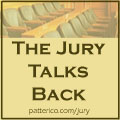[Posted by Karl]
Kudos to The Hotline’s Steven Shepard for noting that the Daily Kos/ Research 2000 polls for a number of 2010 campaigns may be systematically underestimating older voters:
Midterm electorates tend to skew significantly older than those in presidential years. In ‘06, nationally, 29% of voters were 60+, according to exit poll data. In ‘08, those seniors accounted for just 16% of the U.S. electorate. Seniors, as the R2K polls and others show, are more likely to favor GOPers than other, younger demographics.
Yet a review of polls conducted by R2K for the DailyKos shows that the pollster is anticipating that those who come to the polls in Nov. will more closely resemble a presidential electorate than the older group that tends to turn out in off-year elections.
Hotline OnCall examined those polls released by DailyKos in ‘10 in states where exit polls were conducted for the nat’l media in both ‘06 and ‘08. In each of the 11 polls reviewed, the percentage of likely voters in the Kos poll who were 60+ was smaller than the ‘06 electorate. And in all but one poll, the percentage share of voters in both the 18-29 and 30-44 subgroups was larger in the Kos poll than in the corresponding ‘06 state exit polls.
Moreover, in each of the 11 surveys, voters 60+ were more likely to favor the GOP candidate in head-to-head matchups than was the complete pool of respondents…
How does R2K come up with their model for ilkely voters in 2010? When Shepard first raised the issue in March, Research 2000 Pres. Del Ali said the sample is weighted based on exit polling, demographics, and what he called an “educated guess” using his background in social science. However, in the latest story, both DailyKos founder Markos Moulitsas and Ali made clear that the model is not based on historical exit poll results. Indeed, Ali may have let the cat out of the bag:
“I don’t like to stereotype other midterm elections,” said Ali.
“There’s almost this mindset etched in stone [that] it’s 1994,” Ali added, refering to political prognosticators forecasting a GOP landslide in Nov. “Just by the fact that Barack Obama won in Florida … he would not have won in 1994.”
Both Ali and Moulitsas also dismissed any notion that the sampling, weighting, or any other aspects of methodology are influenced by the blog’s ideology.
Despite such protestations, Ali’s “educated guess” about the midterms sounds quite a bit like the spin Pres. Obama has been feeding nervous Dems: “The big difference here and in ’94 was you’ve got me.” There are some fairly obvious questions that might be raised against that theory, but for the moment, let’s set aside those related to Obama’s approval level, the generic ballot, etc.
One question that might be asked is whether Obama’s presence shrinks the 60-plus share of the electorate. Nationally, there is little evidence of this. The 60+ bloc was 24% of the electorate in the prior presidential election of 2004 and 23% in 2008 with Obama on the ticket.
Of course, we actually elect people to represent states and districts. It is true, for example, that the 60+ share of the electorate in Washington state dropped from 32% of the 2006 vote to 19% of the 2008 vote (which was also a big drop from 27% of the 2004 vote), which seems to be the basis for the dKos/R2K weighting in their recent Washington state poll. The question is whether such drops (where they can be shown to have happened) actually represent a “new normal” for likely voters that continues even when Obama is not a candidate.
There certainly was no “new normal” in Virginia last November:
Exactly a year ago, an impressively high two thirds of all eligible Virginians voted, a slim majority of whom (52 percent) swung for Obama. The number dropped by double digits this week, which by itself cripples comparisons between the two races. But where the numbers really skew are in the demographics. A year ago, young voters, who usually vote Democratic, were 20 percent of the electorate; today the number was barely half. Among people over 60, who tend to lean conservative, the number doubled from 11 to 21 percent from last year.
In short, the breakdown for younger and older voters in Virginia in 2009 looks a lot more like 2006 than 2008.
The dKos/R2K poll of the 2009 Virginia election had predicted the 18-29 bloc would be 16% and the 60+ bloc would be 15% of the electorate. As a result, dKos/R2K came up with a 10% margin of victory for Bob McDonnell, when the actual margin turned out to be a 17.5% blowout. (The dKos/R2K poll also underestimated the margin of Chris Christie’s win in NJ and was the worst poll in the closing days for Scott Brown in MA.)
Dems have tended to rationalize these recent losses by saying that Creigh Deeds was a bad candidate in Virginia, Martha Coakley was a bad candidate in Massachusetts, and Jon Corzine was an unpopular incumbent. Such rationalizations — even if true — run contrary to the apparent dKos/R2K hypothesis that off-year post-Obama elections will nevertheless have a turnout model resembling the 2008 election. To the contrary, the real world data so far tends to suggest that Pres. Obama’s support does not save otherwise vulnerable Dems.
Of course, those recent elections are now history — and we know the dKos/R2K crew doesn’t care much about history. Thus, let’s take a look at… the latest dKos/R2K “State of the Nation” poll. That poll asks about voter intensity: “In the 2010 Congressional elections will you definitely vote, vote, not likely vote, or definitely will not vote?” And the 60+ bloc answers that it is pretty much as intense about the midterms as the 30-44 bloc and the 45-59 bloc. The least intense bloc is the 18-29 bloc. How these results get translated into roughly equal shares for the 18-29 and 60+ blocs in R2K’s likely voter model is an, er, interesting question.
However, at the moment, The Hotline’s Steven Shepard seems to be about the only person getting close to asking that question. This is in marked contrast to the treatment afforded Rasmussen Reports, which has been the subject of numerous attacks from Democrats and fellow travelers, including Andrew Sullivan. Not a week goes by without Pollster.com getting complaints about Rasmussen, despite the fact that Rasmussen — unlike most firms — polls likely votes (and uses robocalls, the results of which have been pretty solid lately). Perhaps the people fixated on Rasmussen’s polls might turn their scrutiny to the dKos/R2k effort. But don’t hold your breath.
—
Note: Incidentally, one of Rasmussen’s big critics is Alan Abramowitz, an Emory University political scientist. He was quoted by the Politico attacking the very notion of polling likely voters early on, and he has complained about Rasmussen at length at Pollster.com, not only about their sample, but the frequency of its polls, etc. It is probably purely coincidental that the first comment on Shepard’s latest story is a defense of the dKos/R2K poll is from someone calling himself Alan Abramowitz, despite the fact that R2K has upped the frequency of its polling and is doing early polling of likely voters. That the commenter’s defense is so amateurish — relying on national figures for the 65+ bloc, instead of the figures for the 60+ bloc in the states polled by dKos/R2K — makes me hope that the commenter is an imposter, as I would expect better from a noted academic.
–Karl


